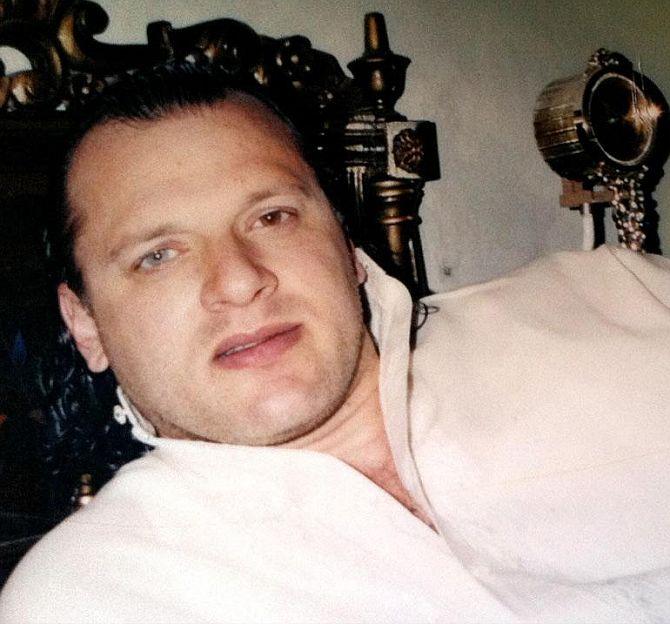
'Lashkar is full of soldiers; it is full of spies, and you never know who is retired and who isn't... Headley asked one of the army majors, who claimed to be a retired officer, from where a lot of the information was coming from and he was told the military have become particularly proud of a series of sources they have in India.'
Adrian Levy, co-author of the book The Siege: The Attack on the Taj, speaks to Rediff.com's Sheela Bhatt in a compelling interview.
In the first part of the exclusive interview, Levy revealed how America's compromise with David Coleman Headley, one of the masterminds of the attacks, affected India's national interest.
Part I: 26/11: 'America sacrificed Mumbai to keep Headley playing'
You have tried to understand David Headley's psyche. Can you tell me what his understanding of India is?
It is so conflicted. I think we wrote this in the book really clearly that he loves Mumbai. He thinks it is a really rambunctious city of enormous energy. A city of enormous wealth, a city of enormous colour. A city with a large Muslim population. He loved the city's traditions.
And he understood all of that. He liked the political hucksters, he understood the evolution of the Shiv Sena ideology. The evolution of Muslim gangsters. And you see all this in the way he wrote about the city, in the way the relationships that he formed.
His love of the Taj Mahal hotel is recorded. He hung out at the Taj all the time. And a lot of that time he wasn't working in the hotel. He hung out at the Taj because he liked the Harbour Bar. He liked the Sea Lounge. He liked to be seen sipping champagne with his rich friends, living the high life in Mumbai. Figure that out.
You got this split, whereby on one hand he loves the city, but he hates the country; what the country stands for. On one hand he loves the people. But he can justify his hatred of certain people, some Hindu people, some Jewish people, some American people. You know he is not really a political animal.
So when you call him a psychopath, what do you mean?
Well in a sense that ultimately he cares about himself. The deal with Headley is Headley. The deal with Dawood Gilani is Dawood. He has always sacrificed all the people around him.
His mother, as you know, was Caucasian. She was from Maryland and from a remarkable family, an adventuress. And she got together with his father, who was a very famous, wonderful Lahori broadcaster. Syed Gilani was a fantastic man.
Please ...
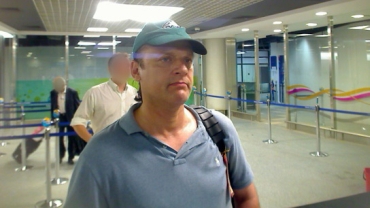
Sheela Bhatt's interview with Adrian Levy continues...
And they got together during the 1950s and their son, the product of this mixed marriage, was born in 1960 as a cross fertilisation between a liberal intellectual from America and liberal intellectual from Lahore.
David, according to his mother, was suffering from lack of self. He was divided between two communities so much that he almost couldn't find himself.
Was he the Pakistan boy? He went to the military academy in his teenage years.
Was he the all American kid who lived on the Upper Westside in New York and opened a video store and dealt in drugs?
Which one of these conflicted identities was his?
and in the midst of the fight between Pakistani Dawood and American David, he got lost.
Because, when you or I, if we have a sense of self, we have the morality, social conscience, friendships, we don't sacrifice our friends, family. Where are those things? They have all gone. They have all been stripped away.
The friends, he turns over, he sacrifices them. (Tahawwur) Rana he betrays. He was his best friend from school. All of his criminal associates he betrays. The Lashkar-e-Tayiba, he betrays.
You said America gave so much information to India and other countries like France about a possible terror attack.
Why would Headley give such important information about the terror operation in Mumbai to the Americans in first place? He was not forced to do that. He could have given any other fake or real information.
I think he also had a bigger plan. He is always trying to play people off against each other because Headley believes he is cleverer. Headley is a survivor.
If you talk to DEA (US Drug Enforcement Administration) agents who interrogated Headley and who worked with him and if you talk to the people within the intelligence community who interrogated him, they found he was amazingly charming, amazingly convincing.
If you see Headley in action on any of the tapes, when eventually he was interrogated by the FBI (Federal Bureau of Investigation) in 2009 and 2010 after the Mumbai attacks -- there are 80 hours of footage -- he is the most remarkable communicator. He puts everyone at ease in the room.
When you say 'remarkable,' what do you mean?
He is very convincing. He is a human being who understands the weaknesses of other human beings. He understands the need of people to be loved and liked. He is a salesman. He goes into these situations and he knows everyone has a weakness.
The centre point of your story, your book is Headley, actually.
Well, no. I think, actually, he is the evolution of the plot.
What comes out of this is the conflicts of interest of America.
On the broader scale, the backdrop is the conflicts of interest. But actually you know it is the people who drive this story.
Please ...
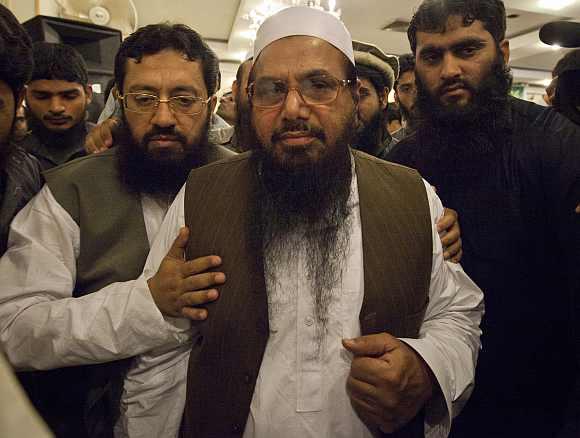
Tell us about the Karachi plot. How did the actual training of the terrorists happen? How did the Lashkar move ahead with this terror plan?
The plan didn't actually move to Karachi till a later date. The really interesting thing is that they themselves couldn't work out how to get the plan going.
They began with a core group of 32 men and those men trained very hard, they were religiously indoctrinated... that is not really a fair word...
The LeT, you know, is quite principled -- to them. the religious dogma is very important. It will not take anyone willy-nilly like Ilyas Kashmiri (did). If you want to be a fighter, join Kashmiri.
If you want to believe in Deobandism, if you want to believe in the Sunni sect and back the Hadith view, then you would move to a different organisation.
The LeT has a bit of a secular view. So all of these people went through complex training.
Who was the head?
It was run by two, three people who were effectively involved -- there is a military coordinator, who is called Qahafa, it is a very strange nom de plume.
Then the second in command for foreign operations is Sajid Mir, which is his real name.
The third man involved is a military trainer who was primarily the LeT commander in Kashmir, in the valley for many years, who was brought out specifically for this job.
And those three were put in charge. And they got through their religious indoctrination which is very detailed. And they do that in Muridke, the LeT headquarters outside Lahore. And they are put through a whole series of experiences that none of them have had.
The philosophy of religion, it is quite challenging. It is not simply -- as people portray in movies -- like rote learning. They go through some very deep debates.
Please ...

Like Ajmal Kasab?
Yes, like Kasab. He had to confront for the first time a school of thinking. It is not just about reach for the gun; he had to actually listen to a process of thinking that he hadn't heard before.
They (the killers) meet a community within the LeT because what the LeT does is to remove the need for everything outside the LeT.
So if you were from a fractured family and you get swept into the organisation, they slowly chip away at the bonds so that your family is the LeT.
I tell you how this works with the group of 32. Many in that group grew scared when it became clear that a plot was emerging. No one knew it was Mumbai.
But as soon as some details were clear -- for example, it would be a fidayeen operation -- people rang up uncles and brothers, people who had good families, and they said 'I am scared, this is not why I joined. I joined to fight in a military conflict, I didn't join for this and I didn't join to kill myself.'
And people knocked on the gates of LeT and they said we want our sons back. They paid fines and they took their children away.
Every week people dropped out and a lot of the people who were left behind were from families who were heavily fractured, where the mother and father were split or where the father was absent. Where there was no one home, where there was no money, where there was no telephone.
They are the people the LeT picked.
So they start off there, they have religious indoctrination, they move them up beyond Muzaffarabad in Pakistan occupied Kashmir, to the Chella Bandi hills, and there is a base up there which was actually created initially for the first big push for training in the Kashmir valley.
A section of that base, in a place which they call House of the Warriors, which is just the mujahid house, was turned over to the group of 32.
When they arrived, their names were removed, they were given numbers, they were split up into canvas tents, and they were put through the military mill.
So they have gone from spiritual to military.
And the group gets smaller until there are 20 and then they go back to Muridke and they are involved in more spiritual training, physical training, they begin to introduce swimming because the marine element has come to the fore.
The Lashkar built a bit of a white elephant, a very rare folly, something really stupid.
They built an Olympic size swimming pool in Muridke in the university. But there is no filter system. So it is basically a tank, you fill it with water and the water turns black and no one wants to swim in it.
So they built this really massive pool which after a while was treacle thick. So they used to swim in the canal outside, the canal was really clean.
And these guys begin to learn swimming and went back to Muridke where they received much more intense training.
Things were very interesting in the camp. Some things stand out. The first thing that stands out is the kind of training that was offered. They were offered training in room clearance using, what I would describe as, Western methodology.
A method of moving in close spaces in rooms using hand signals so there is no speaking.
They created mock-ups with buildings so they would learn to take doors down, shield behind mattresses, to use each other as human shields, to communicate non-verbally so that the group would move together.
And they did this at night, low vision, under light fire, with no food. There was a process culminating in awards to reward the people who were most successful. It was very sophisticated, not involving lots of money.
Please ...
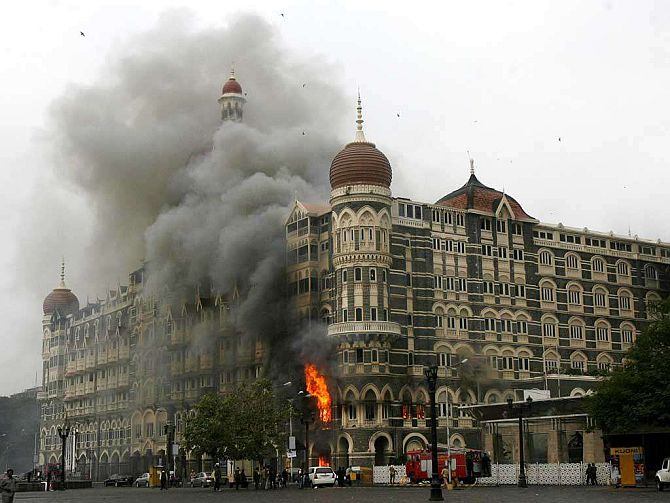
So when and how did they know this training is for Mumbai and the Taj Hotel?
They didn't know it was the Taj initially. They didn't know until they were given a final briefing in Muzaffarabad where the targets were identified and in this camp in the hills in the House of the Warriors, they were shown for the first time the material gathered by David Headley.
That material was the videos shots inside the Taj when he joined a tourist group on one of the Friday afternoon tours. He was there with his mother-in-law's tourist camera shooting everything.
All the still pictures, the GPS, way-markings for the whole city were shown to the boys.
And then they mapped that over Google Earth. They (the terrorists's trainers) could sit these country boys down before the computer. They had never seen one before, let alone the Internet.
They showed them Google Earth and a GPS system, and said you are going here. And the teams are broken up.
So, they begin to get the idea that there will be teams and that Mumbai will be the target, but in fact even then it is not the finished job.
Because another operation occurs in Kashmir and a quarter of the team are moved off for a specific hit-and-run operation and more recruits are brought in to top up the team.
And then they all get together down in Karachi where the control room has been set up, pretty near to the airport, in a military controlled area, which was an obvious place for them to be.
They had two centres, a control room there and two places for the team. One is effectively a bunking room, where there was lots of equipment, maps.
The other room is on a creek to the east of the city and on that creek you could get out to the sea eventually which meant that they could practice on the still waters of the creek.
An interesting thing happened here. The intelligence people who were hanging around the Lashkar -- remember the Lashkar is full of soldiers; it is full of spies, and you never know who is retired and who isn't.
It is a ball of wool. So many of them are military, it is very difficult to say whether they are military serving on deputation or whether they have left. They all claim to be retired.
Headley asked one of the army majors, who claimed to be a retired officer, from where a lot of the information was coming from and he was told the military have become particularly proud of a series of sources they have in India.
They had one in New Delhi. And they have these names for their sources. The prime source in Delhi was christened Honeybee. Honeybee had access to material which allowed Lashkar and the Inter Services Intelligence to know how Indian Special Forces would react if the attack took place.
So what is the security plan on the floor? How will Indian counter-insurgency happen? On the basis of the Indian material, the training manuals were prepared which included training manuals for room clearance, for top to bottom hostage taking clearance, they had all sorts of marine charts and they had a schematic of Mumbai that showed a potential number of landing places, something like four spots were identified.
Please ...
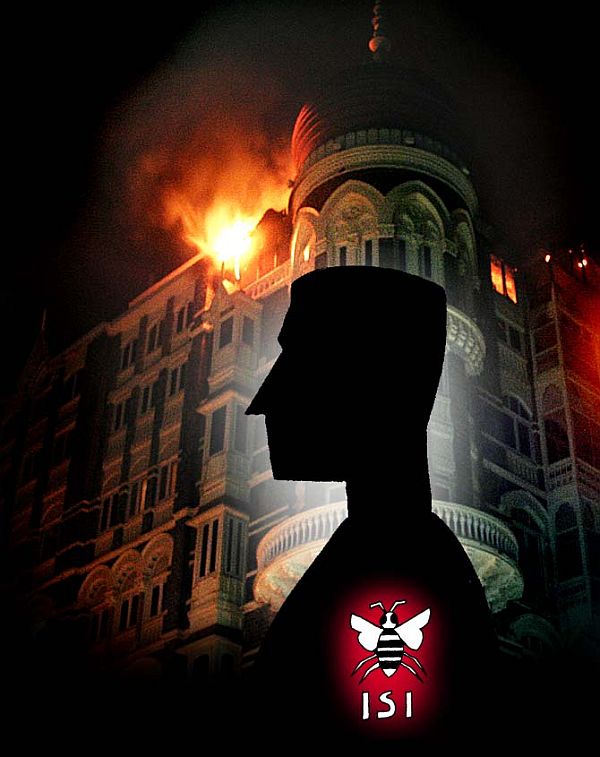
How did they get this Honeybee?
They claimed this was a name they used to disguise an Indian source that they recruited who was passing information for money.
Who is he?
If we knew, we would have written that.
He or she?
He. As far as we know. Based in Delhi.
From the military?
I cannot say. They described it as someone... I cannot say because I don't know. It is ambiguous whether Honeybee is military or whether it is someone in a ministry who has access to the same information.
It has to be a person connected to national security. It is someone within this orbit. It has to be.
I am less inclined to believe that it is someone in the military. Because the Indian military is a very ideological establishment. It is less likely because, as you know, it is very fraternal. But these are guesses. You have to say we don't know.
Did you try to find out?
Yeah. I tried. I haven't got very far on this. But you know... It is quite shocking. Because it seems that it enabled them to work out what to expect after the event and what the weaknesses of the Indian response would be and how to evade it.
So for example, they knew how a Mumbai police control room worked, they knew how the GPS system works in Mumbai cars.
In Karachi, they built a model of the Taj Hotel using blueprints so they had a kind of a schematic of the Taj. That was shown to the boys in Karachi.
I think for them it was not really the most significant thing. I think the digital elements helped.
The fact that if you have never been to a city, but you know street view on the map, if you put it on street view, then you can walk down the highway in Colaba, past Leopold, and take a right and head down two blocks and hit the service lane at the back of the Taj.
That is what you need to know. You need to know the tailor shops on the left, the hardware store is on the right. It is that kind of thing that helped them. These are country boys, they don't have any great experience.
Please ...
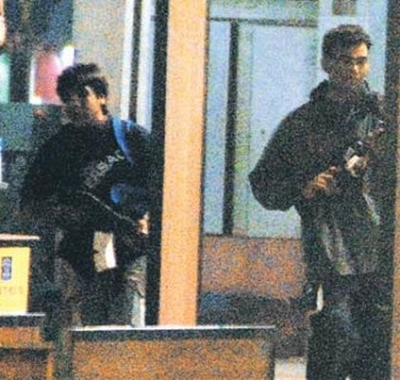
What is the life story of these ten terrorists?
This is a really interesting thing. First of all, nearly all the names given are partially wrong. The lives of eight of them is pretty identical. In the sense that they are, broadly speaking, from Pakistani Punjab, broadly speaking, mostly from southern Punjab. As you know, that is the hot bed of sectarianism where there is presence of LeT or Lashkar-e-Jhangvi or Sipah-e-Sahaba, particularly.
It is also an area where a lot of political horse-trading takes place. Really, they run a government within a government and no one is in control of those groups.
You can see that if you go to these places, particularly to Okara, where Kasab comes from. Zaki, the LeT military commander, is from Okara, too.
It is significant because Okara was a very impoverished, down-on-its-luck city until lots of boys began to die in Kashmir. Then it was renamed the Blessed City. Because the only way it got virtue was through the fidayeen.
There was no industry, no social welfare. The welfare was provided by the LeT. The hospitals are run by them, the seminary is run by Sipah-e-Sahaba.
The only way you could get medical treatment or money for the family was by being an adjunct. But it is not just joining the Lashkar, it is also about publicity.
You could go to Okara now, what it says on the walls is not Bollywood, not cricket, but jihad.
There are newspapers with cartoons and in the cartoons are the fidayeen. You know they joke that there is a character called jihad-Joe for school boys. And the Lashkar knows this. They describe children as blank blackboards. They fill them with these ideas.
Even now?
Even now... completely! This is a very difficult thing because in the absence of the writ of the government, in the absence of investment in education, what will happen is that these groups pick them out.
So, these 10 boys, the first thing to identify is broadly speaking their families are fractured. Broadly speaking, they are from that geographical area. They are brought up in districts that are held together by the governments of jihad.
More than that a lot of the boys come from places which can watch India. They are from border areas where they look out of their bedroom windows and they are looking over the borders.
They are involved permanently in the instability of the border. They know about the tit-for-tat raids, the shelling from all the border wars. So there is the culture.
I can think of two of the boys whose family had lost members in the 1965 and 1971 wars. So in sense, the view from the bedroom window then becomes the world view and then they are picked on by an organisation offering them a glorious way out. Even then children try to get out.
One of the ten (terrorists) is slightly different. In that the leader of the operation was much more decisive. And we know from all of the conversation that took place from the interrogations of Kasab.
The man in the end picked out to lead the operation, in some sense, was much more of a veteran. But he was not typical of the way the operation worked.
Please ...
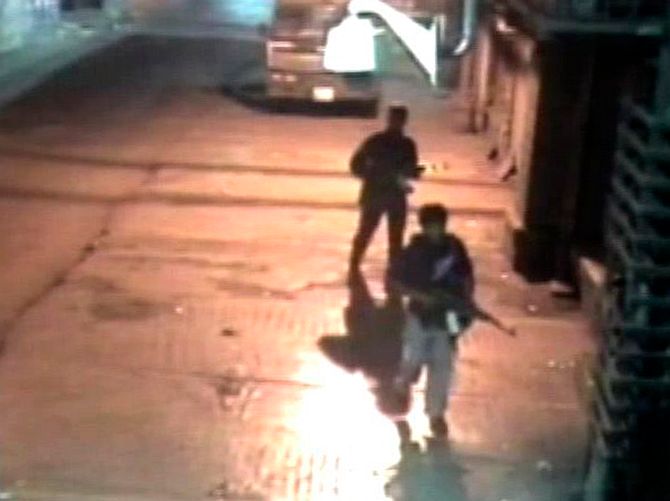
Nine terrorists died in Mumbai, but there is no social visibility of their parents. Neither did the media in Pakistan report about them. Why?
The second part of the story is this. All of the families were approached by the jihadi outfit, they were all approached by LeT afterwards, they were approached by the intelligence apparatus and they told the families 'I am sorry but your child is dead.' They claimed the children died in Kashmir, there was a glorious battle. 'Here is a photo. This is your son, he is a shaheed (martyr). And he died in the war at Baramullah, in Sopore...'
The families were not told that they died in Mumbai?
The intelligence agencies categorically denied that. They told the families you would hear lots of stories. It is black propaganda. These boys fought in Kashmir. Every family was given the same story.
How do you know that?
We went to all of them. In two cases the family was told the boy had drowned running away from the Rashtriya Rifles in a river in Kashmir. Their whole thing was to pay money. They (the terrorists's families) got shaheed money. They got cash from the Lashkar, pitiful amounts of money.
How much money?
Really insignificant amounts. They were promised like Rs 1 lakh... nothing really, for a life. And they were given this back up story and they were told that anyone comes to you. say this only.
Final part of the interview: Who are the 10 locals who helped the 26/11 terrorists?